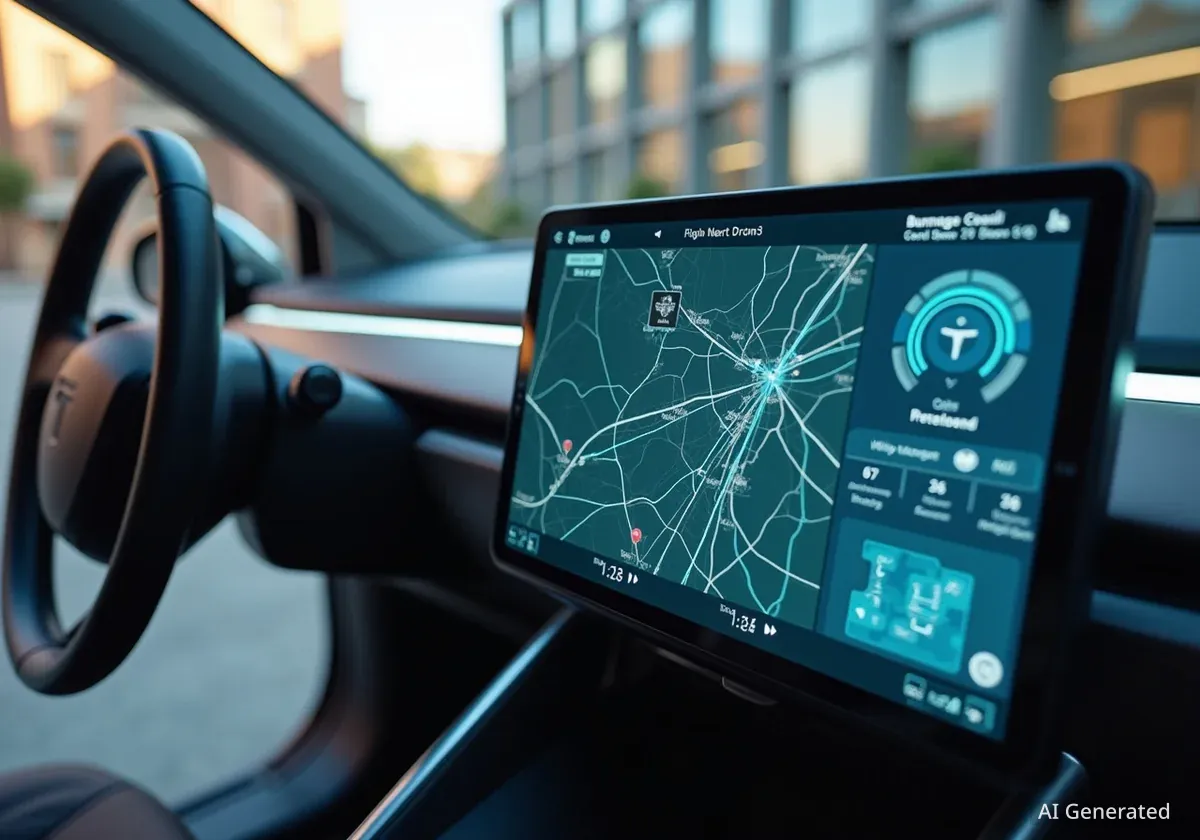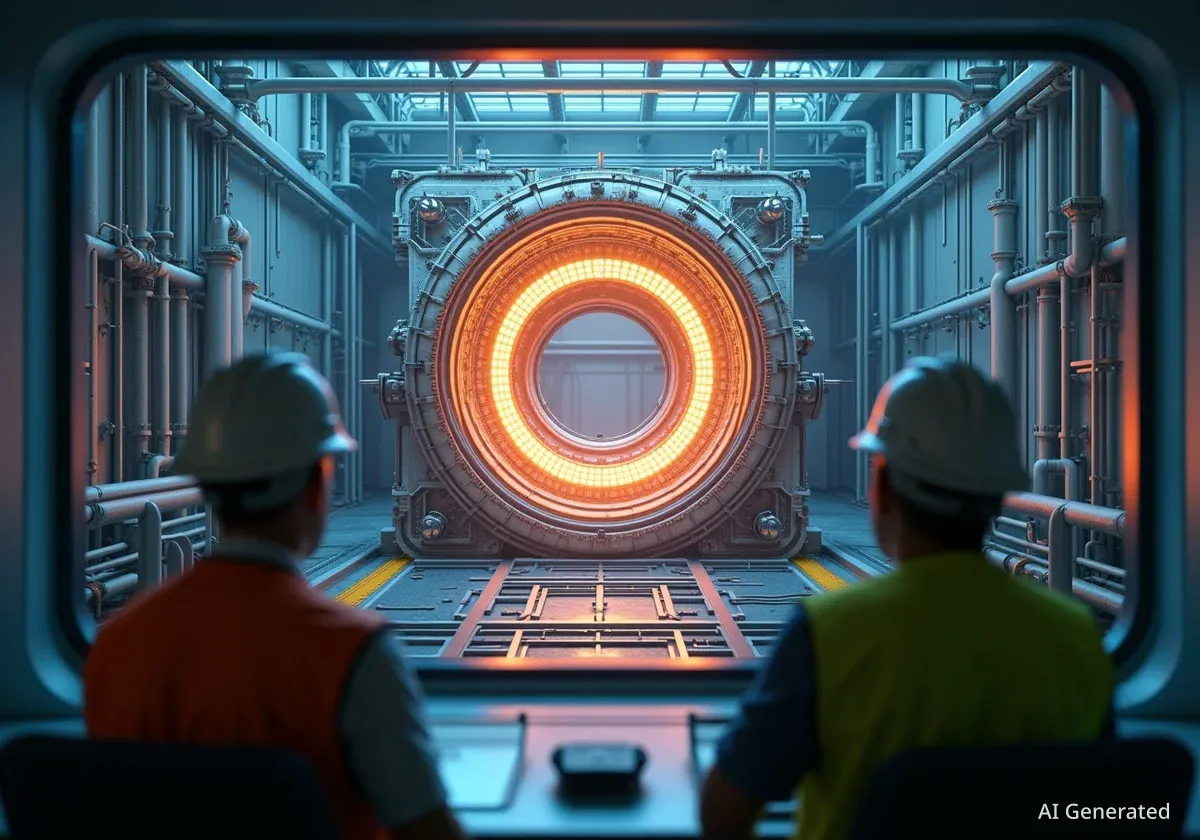Eos Energy Enterprises reported second-quarter 2025 revenue of $15.2 million, a figure that nearly equals its entire sales for the 2024 fiscal year. The company, which specializes in zinc-based battery storage systems, saw its shipments increase by 122% from the previous quarter, driven by escalating demand for energy solutions to power artificial intelligence infrastructure.
With a commercial project pipeline now valued at $19 billion, Eos is positioning itself as a key supplier for the energy-intensive AI sector. The company's growth is further supported by significant U.S. federal incentives aimed at promoting domestic energy production, including a $277 million loan from the Department of Energy.
Key Takeaways
- Revenue Growth: Eos Energy's Q2 2025 revenue of $15.2 million nearly matched its full-year 2024 sales of $15.6 million.
- AI-Driven Demand: Hyperscale data centers now account for over 20% of the company's $19 billion commercial pipeline.
- Government Support: The company benefits from a $277 million DOE loan and production tax credits worth an estimated $90 million annually per production line.
- Financial Outlook: Eos reaffirmed its 2025 revenue guidance of $150–$190 million and projects reaching gross margin breakeven in Q1 2026.
Rapid Financial Growth and Production Scale-Up
Eos Energy is experiencing a significant acceleration in its financial performance. The company's revenue in the second quarter of 2025 alone demonstrates a steep growth trajectory compared to the $15.6 million generated throughout all of 2024. This increase is a direct result of a 122% quarter-over-quarter rise in product shipments as its automated manufacturing line becomes operational.
The company's confirmed orders, or backlog, stood at $672.5 million at the end of the quarter. Beyond this, its commercial pipeline, which represents potential future projects, has expanded to an impressive $19 billion, equivalent to 77 gigawatt-hours (GWh) of energy storage capacity.
Projected Revenue Path
- FY 2024 Actual: $15.6 million
- FY 2025 Guidance: $150 million – $190 million
- FY 2026 Analyst Consensus: $476 million
Path to Profitability
While Eos currently operates at a loss, its financial metrics are improving with increased production volume. Management has stated a clear goal of achieving contribution-margin-positive shipments by the fourth quarter of 2025. Following this milestone, the company anticipates reaching gross margin breakeven in the first quarter of 2026.
To support this growth, Eos has strengthened its balance sheet. The company raised over $300 million in 2025 and ended the second quarter with approximately $183 million in cash. According to the company, recent debt refinancing is expected to save around $400 million in interest costs over the life of its loans, providing a longer runway to achieve profitability.
Zinc Battery Technology as a Lithium Alternative
At the core of Eos Energy's value proposition is its Znyth Z3 battery module. This technology uses zinc as its primary component, offering distinct advantages over the more common lithium-ion batteries, particularly for large-scale grid applications.
One of the most significant benefits is safety. Zinc-based batteries are fundamentally nonflammable, which reduces the risk of catastrophic failures and eliminates the need for expensive cooling and fire suppression systems. This is a critical factor for installations in dense areas like data center campuses.
Why Zinc-Based Batteries?
Unlike lithium-ion batteries that rely on materials like lithium, cobalt, and nickel, Eos's Znyth technology uses widely available and recyclable materials such as zinc, carbon, and polymers. This insulates the company from volatile commodity markets and helps ensure compliance with domestic-content requirements for U.S. projects.
Designed for Durability and Efficiency
The Znyth Z3 modules are engineered for a long service life, with the ability to withstand millions of charge cycles over a 20-year period. The company reports a round-trip efficiency in the high-80% range, which becomes competitive with lithium-ion systems when factoring in the energy costs (parasitic loads) of the extensive HVAC and safety systems required for lithium batteries.
Eos offers pre-configured systems called "Cubes" and "Stacks," which are designed for easy installation and scalability. These modular designs allow developers to deploy up to 1 GWh of storage capacity per acre, making them suitable for large-scale projects.
Powering the AI Revolution
The explosive growth of artificial intelligence is creating unprecedented demand for electricity. Hyperscale data centers, which power AI models, are becoming a primary driver of new business for Eos Energy. According to company disclosures, data center projects now represent approximately 20% of its $19 billion pipeline, translating to over 15 GWh of potential demand.
"As AI computing causes power consumption to explode, hyperscalers need not only increased electricity but also safe, dependable, and durable infrastructure."
Data center operators are drawn to Eos's zinc technology for several key reasons:
- Safety: The nonflammable nature of zinc batteries makes them easier to permit and install within crowded data center facilities where lithium-ion systems might pose an unacceptable fire risk.
- Long-Duration Storage: AI workloads can cause large, sustained power draws. Eos batteries are designed to provide multiple hours of power, which is better suited for managing these fluctuating loads than batteries designed for brief peak shaving.
- Power Readiness: The systems are designed for rapid deployment, reducing the time between capital investment and operational power availability.
Global Data Center Energy Consumption
According to industry estimates, data centers consumed 415 terawatt-hours (TWh) of electricity in 2024, or about 1.5% of the world's total. This is projected to more than double to 945 TWh by 2030, highlighting the massive market opportunity for energy storage solutions.
Federal Subsidies and Domestic Production
Eos Energy's business model is significantly enhanced by U.S. government policies aimed at building a domestic energy supply chain. The Inflation Reduction Act (IRA) provides powerful incentives that directly benefit the company and its customers.
The Section 45X production tax credit offers a direct subsidy to Eos for manufacturing batteries in the United States. Management estimates that each 2 GWh production line could generate approximately $90 million in tax credits annually. Furthermore, the Section 48E investment tax credit provides a 30% credit for stand-alone storage projects, which can increase to 40% if domestic-content requirements are met—a threshold Eos's products are designed to achieve.
Another tailwind comes from the Foreign Entity of Concern (FEOC) rules, which will take effect in 2025. These rules may render battery projects using Chinese components ineligible for tax credits, creating a competitive advantage for domestically sourced alternatives like those from Eos.
Valuation and Execution Risks
Despite its rapid growth and technological advantages, Eos faces the critical challenge of execution. The company must prove it can scale its manufacturing operations to meet demand while achieving profitability. Its financial targets, including reaching gross margin breakeven in early 2026, leave little room for error.
Investors are placing a premium on the company's growth potential. At its current valuation, Eos trades at approximately 23.6 times its projected 2025 sales. This is significantly higher than established lithium-ion competitors, which trade closer to 2 times sales. The valuation reflects the market's expectation of hypergrowth and the unique benefits of its technology and federal support.
The primary risk remains the company's ability to transition from a development-stage firm to a profitable, large-scale manufacturer. Successfully converting even a small fraction of its $19 billion pipeline into firm orders would be transformative, but any delays in production or failures to meet margin targets could pose significant challenges.





